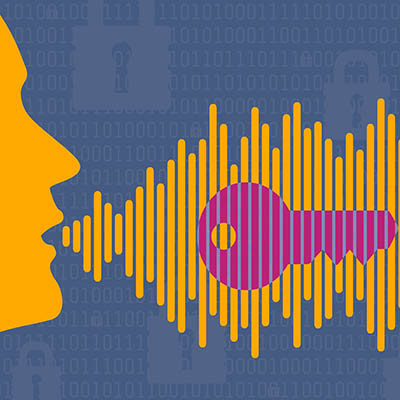JS Business Solutions Blog
What You Should Know About Voice-Based Tool Security
With so many workers performing tasks remotely, it’s no small wonder that authentication is one of the major points of discussion this year. How can you be sure that your company is doing all it can to verify a user’s identity before they access important information on your infrastructure? One such way you can do it is by using voice-based authentication.
Here are some variables you must consider when looking into voice-based authentication.
First and Foremost, How Does Voice Authentication Work?
Authentication in and of itself is simply providing proof of your identity to the system. If the proof matches what the system has on file, the user is granted access. Voice authentication utilizes the user’s voiceprint of a specific phrase to provide secure access to an account. The system then compares the spoken form to the one in storage.
For example, if the passphrase is “Open Says Me” the system will not just check to make sure the phrase is correct, but also the tones and inflections. Voice recognition would fall under the “something you are” category of multi-factor authentication, similar to solutions like retinal scanning, facial recognition, or palm scanners.
How Secure is Voice Authentication?
Like any other authentication measure, you can be sure that there are plenty of stories about how voice recognition can get fooled. Hackers have managed to get the better of this system through the use of recorded segments of a victim’s voice, and they have hidden malicious commands in white noise to gain control over voice-activated devices.
Granted, it’s worth mentioning here that any one identification method will pale in comparison to multiple used alongside each other. Voice authentication is being developed with built-in features that allow users to minimize the possibility of fraud. There is liveness detection, where a measure can differentiate between a live human being and a recorded snippet, and continuous authentication, when the user’s identity is constantly checked for authentic behavior.
Best Practices Concerning Voice Authentication
While we have briefly mentioned some of these already, there are several other best practices to keep in mind when considering voice authentication:
- Multi-factor authentication: MFA is a staple in the office environment, as the more proof one needs of their identity, the more likely security will prevail in the face of an attack. You can pair a PIN or passphrase/password with voice recognition or any other authentication measure.
- Secure storage: It’s important that any records you have on file for authentication are protected and secure, including biometrics. If you don’t, then even your MFA can potentially be fooled.
- Obtaining consent: This is another aspect that is often glossed over, but you will need to show proof of user permission if you are planning to use biometrics for any authentication measures, for privacy and legality reasons.
Sound like a tall order? Don’t let it get in the way of your business’ success. To learn more about how you can secure your business, reach out to us at (781) 715-1900.




Comments